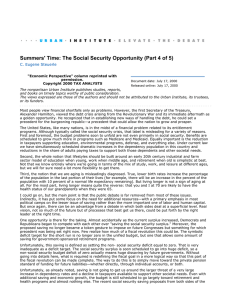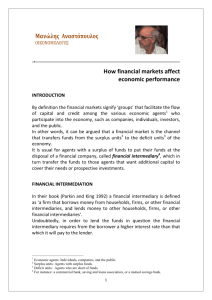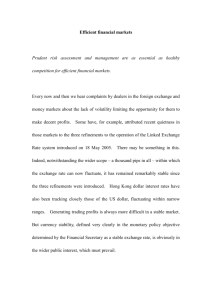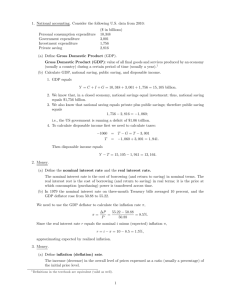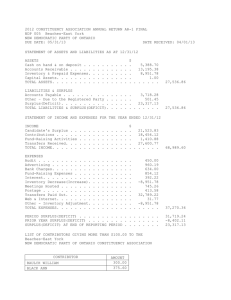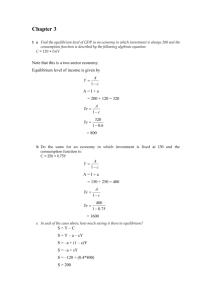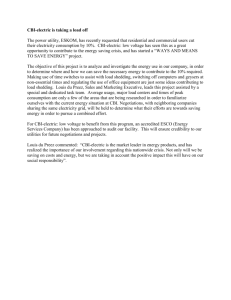Module 1 - CA Sri Lanka
advertisement
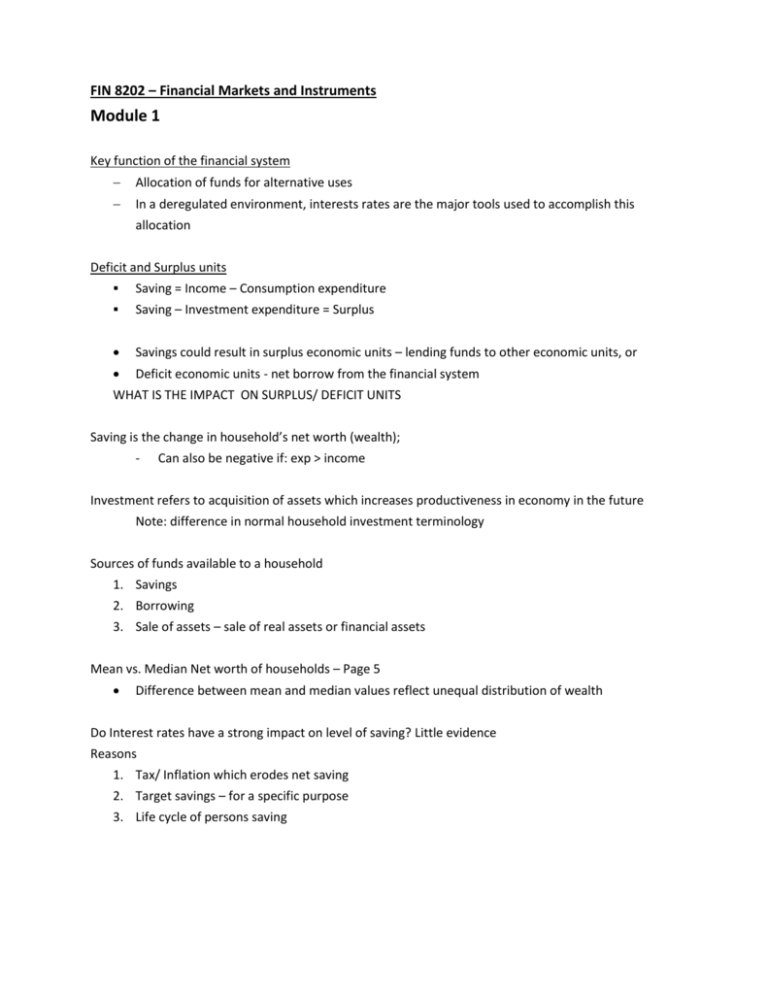
FIN 8202 – Financial Markets and Instruments Module 1 Key function of the financial system Allocation of funds for alternative uses In a deregulated environment, interests rates are the major tools used to accomplish this allocation Deficit and Surplus units Saving = Income – Consumption expenditure Saving – Investment expenditure = Surplus Savings could result in surplus economic units – lending funds to other economic units, or Deficit economic units - net borrow from the financial system WHAT IS THE IMPACT ON SURPLUS/ DEFICIT UNITS Saving is the change in household’s net worth (wealth); - Can also be negative if: exp > income Investment refers to acquisition of assets which increases productiveness in economy in the future Note: difference in normal household investment terminology Sources of funds available to a household 1. Savings 2. Borrowing 3. Sale of assets – sale of real assets or financial assets Mean vs. Median Net worth of households – Page 5 Difference between mean and median values reflect unequal distribution of wealth Do Interest rates have a strong impact on level of saving? Little evidence Reasons 1. Tax/ Inflation which erodes net saving 2. Target savings – for a specific purpose 3. Life cycle of persons saving Intermediation and Financial Markets Intermediation/ Indirect Financing – Advantages 1. Asset Transformation a. Maturity transformation b. Quality transformation c. Denomination transformation 2. Spreading of risk over a large number of depositors 3. Low transaction costs 4. Economies in processing information a. On loans, and intermediaries monitoring loans to mitigate default Direct Financing – Advantages 1. Large value transactions 2. High credit ratings Why is there a growing demand for Direct financing? On the supply side diversion of savings from intermediaries to fund managers Are fund managers intermediaries? On Demand side companies with strong financial fundamentals by pass the banks and raise debt securities Primary vs. Secondary markets Primary markets Transfer of funds through IPO’s and Private placements Private placement has lower transaction costs, and greater speed of raising capital Success depends on investors’ perceptions of ability to subsequently sell their securities to others: MARKET LIQUIDITY Secondary market Liquidity Liquidity – ease of buying and selling securities without large changes in price Factors affecting Liquidity 1. Volume of trading 2. Market makers 3. Overseas buyers/ sellers 4. Development of Derivatives 5. Short selling
